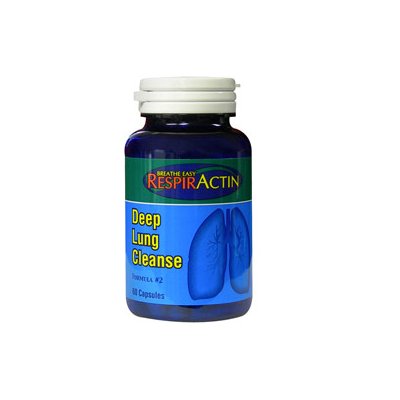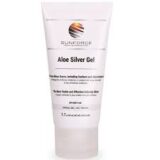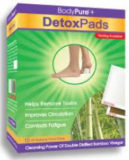Deep Lung Cleanse use a combination of Eastern and Western herbs to provide clearer breathing, better blood oxygenation, and long-term relief from asthma and other chronic respiratory conditions. Deep Lung Cleanse were designed by Dr C. Leigh Broadhurst, Ph. D., to be safe and effective for anyone, young or old, who desires natural support for better breathing.
Asthma is a chronic inflammatory condition, which affects the bronchial passages and lungs. Treating asthma naturally requires attention to a number of factors, which trigger inflammation, from cigarette smoke, to food allergies, to moldy basements and carpets. It also requires using supplements, which (1) act to provide clearer breathing within minutes, while at the same time (2) work over the long term to reduce the bronchial inflammation that is the root cause of asthma. Products containing ephedra (ma huang) act in capacity (1) but do nothing to address (2), and have side effects such as insomnia, high blood pressure, anxiety, and abnormal heart rate. Ephedra is not safe for children or for persons with cardiovascular disease, diabetes, hypertension, clinical depression, or anorexia. Therefore, Sun Force herbal respiratory support products have been carefully formulated without ephedra so that they are safe and effective for everyone when used on a long-term or short-term basis. Deep Lung Cleanse work synergistically with the RespirActin® liquid, and best and fastest results are achieved by using both products simultaneously. This is especially true during the first month of treatment. However, Deep Lung Cleanse can be used alone when taking RespirActin® liquid is not convenient. Either product may be used alone at the consumer’s discretion for long-term treatment after asthma or related conditions have improved on a natural treatment program.
Product Description
How can herbs function to prevent and treat asthma?
Herbal products have the potential to provide relief from many chronic inflammatory conditions, including asthma. One reason why herbs relieve inflammation is because they contain antioxidant phytochemicals. Chronic inflammatory conditions are characterized by an excess of reactive oxygen metabolites (ROM; also called free radicals). ROM irritate and inflame tissues, and cause immune reactions to proliferate beyond the point where they are wholly beneficial. (Immune responses unavoidably produce ROM, because limited amounts of ROM have value as part of the defense mechanism.)
Antioxidants help reduce most types of inflammation, including asthma, allergies, sports injuries and post-operative inflammation. This is because antioxidants step in and “quench” ROM. What antioxidants actually do is act as chemical sacrificial lambs, preferentially reacting with ROM so that ROM do not react with the body’s tissues instead. Different phytochemical antioxidants act on one or more types of ROM, so a carefully constructed blend of herbs can cover all bases. Some antioxidant phytochemicals prevent the formation of ROM as well as quenching them after they are formed.
Preventing inflammation and its consequent permanent damage to lung tissue is really the essence of controlling asthma. Arachidonic acid (AA) is a polyunsaturated fat normally found in cell membranes. The action of enzymes called lipoxygenases on AA produces the series 4 leukotrienes. Leukotrienes (LTs) are biochemicals that keep inflammatory conditions running once they are triggered, thus play a role in asthmatic bronchial inflammation. Some LTs are also strong stimulators of bronchial constriction, and stimulate the production of mucus: they are 1,000 times more potent than histamine! This means that small amount of these LTs can narrow the breathing passages, and precipitate an asthma attack.
Some misguided information had accused AA of being a “bad fat”, but from a research standpoint, this is naive and flawed. Half the polyunsaturated fat in your brain and central nervous system is AA! Arachidonic acid is vital for good health. It does not easily get kicked out of cell membranes by other fats, and does not cause allergies or asthma. While LT’s may cause trouble, AA is also the precursor molecule for many beneficial biochemicals. The asthma triggers that set the inflammatory motion in process are the real culprits.
Today’s cutting edge oral asthma medications inhibit lipoxygenase enzymes, or interfere with the action of leukotrienes. However, many traditional medicinal plants have always contained phytochemicals, which inhibit lipoxygenases without dangerous side effects.
Some highlights of the standardized herbs in Deep Lung Cleanse:
Rosemary: Rosemary is known to inhibit the contraction of tracheal smooth muscle stimulated by histamine and acetycholine, so functions to open the airway. Rosemary is also a source of some of the most potent herbal antioxidant phytochemicals known, thus is an excellent choice to combat the ROM which are responsible for a great deal of the pain and swelling associated with chronic inflammatory conditions. Deep Lung Cleanse maximize the antioxidant potential of rosemary by using the patented standardized Rose-Ox extract.
Black Cumin: A traditional treatment for asthma in the Middle East. Black cumin seed oil, and the black cumin phytochemicals nigellone and thymoquinone, strongly inhibit lipoxygenase and prevent the release of histamine from mast cells. Asthma and allergy attacks can be triggered by histamine, which is produced when special connective tissue cells called mast cells are activated. Mast cells are activated by circulating immune system cells that sense danger from infection, toxins or irritants. Like rosemary, black cumin seed and thyme (see below) are known to inhibit the contraction of tracheal smooth muscle.
Thyme: A traditional European remedy for bronchitis, chronic coughing, and upper respiratory infections. A major active phytochemical is thymol. Thyme preparations are approved by German Commission E for reducing bronchial spasms, bronchitis, coughing, and sore throat. Thyme is also a source of other antioxidant and bronchorelaxing phytochemicals.
Cinnamon: Another potent source of phytochemical antioxidants, and a traditional component of Chinese herbal blends for a variety of respiratory conditions, both chronic and acute. Cinnamon also contains the lipoxygenase inhibitors borneol, caffeic acid, catechin, cinnamic acid(s) hydroxycinnamic acid(s), dihydroxychalcone(s), kaempferol, procyanidin-D2, and quercetin.
Magnolia: Considered one of the two most effective herbs in Saiboku-To, an herbal blend used clinically for asthma treatment in Japan. Contains the anti-asthmatic, antioxidant, and anti-inflammatory phytochemical magnolol. Magnolol may act synergistically with steroid medications used for asthma, allowing lower (and safer) doses of steroids to be used with equal effectiveness.
Hoelen: Synergistic with cinnamon in traditional Chinese formulas; used to reduce anxiety and hyperactivity associated with asthma and other conditions causing breathing difficulties. Hoelen also contains anti-inflammatory phytochemicals which act similarly to hydrocortisone.
Schizandra: Improves athletic performance and strengthens those weakened by respiratory or cardiovascular disease by improving oxygenation of the blood and the efficiency of respiration. Especially useful for recovering from bacterial infections (e.g. bronchitis, sinuitis) pleurisy, pneumonia, colds, and flu. Also contains antioxidant and liver protective phytochemicals.
Scute: Along with magnolia, considered one of the two most effective herbs in the Saiboku-To herbal blend for asthma. A rich source of bioflavonoids known to be anti-allergenic, anti-inflammatory, antioxidant, and antihistamine. Also effective against bacteria and viruses which cause upper respiratory infections.
Fritillary: The primary Chinese herb for treating lingering and chronic coughing. Also has a mild bronchodilating effect which is effective for upper respiratory infections as well as asthma and reactive airway disease.



